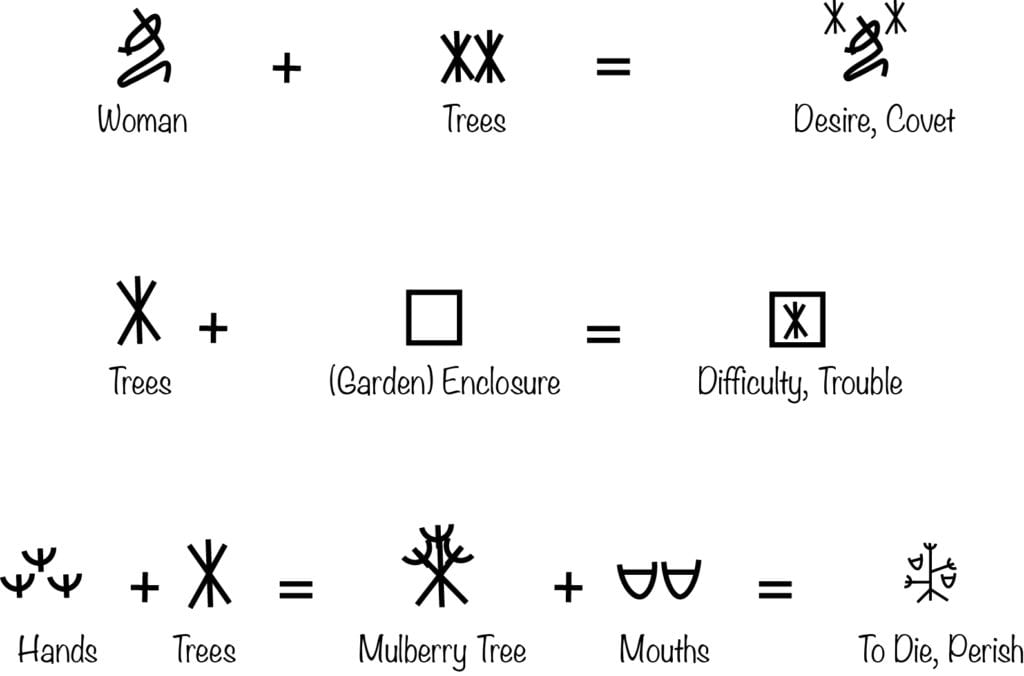Chinese Pictographs of Bible History (August 2)


The ancient Chinese possessed an unusual knowledge of Bible history that they incorporated into their written pictograph language. The most ancient of Chinese writings are called oracle bones in which the pictographs are inscribed on bones and tortoise shells. The inventor of the original Chinese characters obviously had knowledge of the Genesis account. For example, the word for desire or covet is made up of two characters, trees and woman:
There were two trees in the Garden of Eden, the tree of the knowledge of good and evil (the forbidden tree) and the tree of life. In the Genesis account, Eve saw the fruit of a forbidden tree and desired it.
The word difficulty, trouble is made up of tree and garden.
When Adam and Eve ate of that forbidden fruit in the garden, difficulty resulted. Now there would be thorns and thistles and difficulty during childbirth.
Not only was the Earth cursed, but now death would enter in. The character meaning, to die, perish is (see illustration above).
Note how the two mouths (Adam and Eve) indicating eating fruit from the forbidden tree produced death.
These are just a few examples of how the knowledge of the first eleven chapters of Genesis is embedded in the Chinese pictograph language. When witnessing to the Chinese, you can show them that Christianity is not just a Western religion but that their ancient fathers knew and believed in the One true God of the Bible. The Chinese language is a silent witness to the knowledge of Genesis 1-11.
Genesis 2:9, 3:6
Reference
Nelson, Ethel R., Richard E. Broadberry, Ginger Tong Chock. 1997. God’s Promise to the Chinese, Read Books Publisher. Dunlap, TN p.36, 47, 48, 52.
Learn More
Chinese Characters and Genesis
The original ‘unknown’ god of China
Recommended
Book: God’s Promise to the Chinese, ER Nelson, RE Broadberry & G Tong Chock
